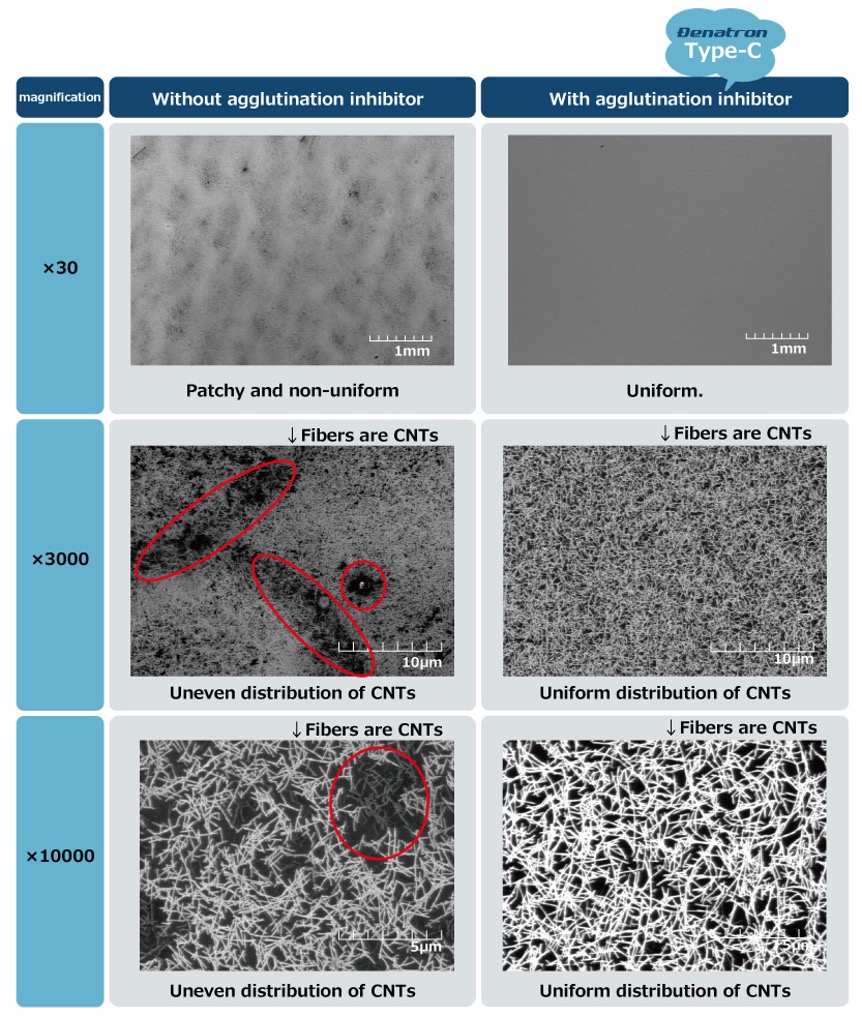DENATRON Museum / Get to know DENATRON
SEM observation of CNTs coating
HOME > DENATRON Museum > Get to know DENATRON > SEM observation of CNTs coating
We used Carbon nanotubes(CNTs) dispersion to create a coating films and observed its surface with SEM.
It is considered difficult to disperse Carbon nanotubes (CNTs) in any kind of solvents.
Even if dispersion is successful done agglomeration of Carbon nanotubes (CNTs) can be occurred in the drying process.
In this case, the status of Carbon nanotubes (CNTs) is changed like below.

If CNTs is agglutinated in the drying process, it can negatively impact on its appearance and physical properties (such as its electrical conductivity).
So which state of CNTs is in the coating film?
We used SEM to observe the following: two coating film samples
- Created without using an agglutination inhibition formulation
- Created with an agglutination inhibition formulation
The state of each film is explained below.
(The coating is applied on the glass substrate by a bar coater and dried up in oven.)

The objects look like fibers are CNTs.
As you can see, CNTs is uniform distribution in the DENATRON coating film.
However, in the case of coating films which have agglomeration, CNTs are distributed unevenly in the coating, so this state makes its electrical conductivity decreased.
This is due to that the dispersion state changes during the drying process and the dispersion balance is lost.
DENATRON Type-C is formulated using unique technologies, so it is possible to produce uniform coating achieve high performance as the coating film.
The image shows DENATRON Type-C applied on PET film.
It can be displayed a lot of abilities such as highly transparency, weather resistant, abrasion resistant, solvent resistant, and highly adhesion on the film.

Return to list of articles
